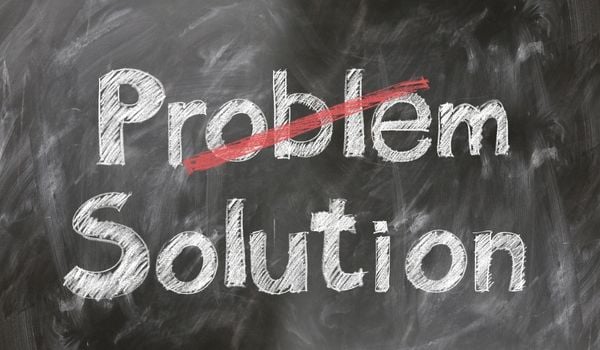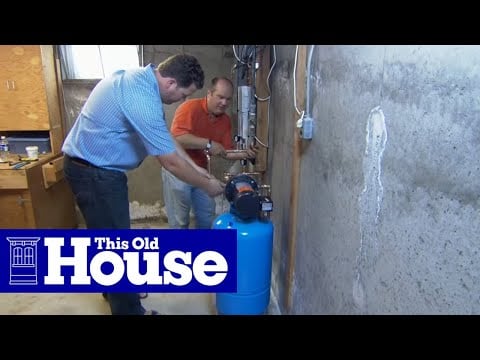If your faucets are barely flowing or your showers feel more like a drizzle than a downpour, you’re not alone. Many well owners struggle with low water pressure at some point. The good news? It’s often fixable — sometimes with just a small adjustment.
There are several ways to boost well water pressure, depending on the cause. From clogged pipes to undersized pumps, identifying the issue is the first step toward stronger flow.
Don’t worry, we’ll walk you through the most common problems with practical solutions to improve your well’s water pressure — without breaking the bank.
⚙️ Key Takeaways
- Check system settings: Verify that the pressure tank and pressure switch are set correctly.
- Inspect and clean the tank: Remove built-up sediment and debris.
- Replace worn parts: Switch out old components like the pressure switch or check valves.
- Upgrade pump or speed: Consider increasing your pump motor’s speed or replacing an older unit.
- Add storage or boosters: A larger tank or pressure booster pump can help meet demand.
- Fix plumbing restrictions: Look for clogged showerheads, blocked aerators, or kinked lines.
- Consider a constant pressure system: A smart way to avoid pressure drops when multiple fixtures are running.
Read on to learn more.
How Does a Well Work?

Let’s review how well water systems work before moving on to low pressure issues.
Wells are a hole in the ground equipped with a pump and pressure tank that stores water until it’s needed. Pressure decreases by a half-pound per square inch for every foot water rises above the ground floor, so without a water pressure tank to act as an air compressor, pressure on your home’s higher floors would be negligible.
What Is the Ideal Water Pressure for a Well System?
Reasons for Low Well Water Pressure
Reasons for water pressure drops range from equipment failure to low water flow from your well. Let’s begin by eliminating mechanical and plumbing system issues as the cause of your water pressure woes.
How Do I Fix Low Well Water Pressure?
The first step to fixing low water pressure is to check each part of your well system for malfunctions or improper settings.
Well Pump
A submersible pump last 15 years or more. Above-ground jet pumps average 8-12 years. If it’s been at least 10 years since your pump was replaced, low water pressure may signal it’s failing.
Signs of an ailing well pump include:
- Clicking noises from the tank
- Pump turns on too often
- Higher-than-average power bills
- No water or muddy water
- Low water pressure
- Tripped circuit breaker
 🛢️ Pressure Tank: A Common Culprit Behind Low Water Pressure
🛢️ Pressure Tank: A Common Culprit Behind Low Water Pressure
The pressure tank plays a key role in your well system by storing water and maintaining consistent pressure. When it’s not working properly, pressure drops quickly become noticeable throughout the house.
Here’s how to check if your pressure tank is the problem:
- Test the air fill valve This small valve controls airflow into the tank. If it’s leaking water or feels wet, the tank’s internal bladder may be ruptured and unable to hold pressure. A faulty air valve can be replaced without special tools — a quick fix for many homeowners.
- Check the pressure gauge If the gauge reads zero — even when water is flowing — it’s a strong sign that pressure isn’t being maintained inside the tank. This usually means something within the system has failed.
- Look for rust or leaks Since pressure tanks are often placed in garages or basements without climate control, they’re prone to rust. Even a pinhole can affect pressure. Inspect the outside of the tank for signs of corrosion or damp spots.
⚙️ Check the Pressure Switch
The pressure switch helps maintain steady water pressure by telling the pump when to turn on and off. Most are set between 40–60 PSI, but settings can drift or be misadjusted.
Start by confirming the current settings. If they’re too low, gradually increase the cut-in and cut-out pressure — just a few PSI at a time. Test pressure at the tap to monitor changes.
If adjusting doesn’t help, the switch itself could be faulty. Common signs include:
- Inconsistent water pressure
- Contacts look corroded or pitted
- Pump doesn’t activate when pressure drops
To inspect it safely:
- Turn off the power.
- Remove the switch cover.
- Check the contacts. If they’re burned or dirty, the circuit may not be closing properly.
The good news? A new pressure switch costs less than $30 and comes with instructions. If you’re comfortable working with basic wiring, it’s a simple DIY fix.
🔌 Inspect the Pump Controller
The pump controller sends power to your well pump. If it’s faulty, your pump may not run consistently — or at all.
In some systems, the controller is mounted on the wall near the pressure tank. Others have built-in controllers inside the pump itself, which require professional servicing. If yours is wall-mounted, it’s easier to troubleshoot.
Here’s what to check:
- Power supply – Confirm it’s getting power and the breaker hasn’t tripped.
- No visible damage – Burn marks or melted wires are red flags.
- Pump isn’t responding – If you’ve ruled out the pressure switch and tank, this could be the next suspect.
You can’t always test a controller without special tools, but replacing it is often a low-cost option — under $100 in most cases. If you’re handy with electrical work, it’s a project you might take on yourself. Otherwise, a quick visit from a technician can confirm the issue.
🛠️ Plumbing System Issues
Clogged or aging plumbing can silently sabotage your water pressure. Hard water, for example, leaves behind limescale — a chalky mineral buildup that narrows your pipes over time.
If you don’t already use a water softener, it’s worth considering. Softeners and salt-free conditioners can help prevent future scale while gradually breaking down existing deposits.
A few other things to check:
- Pipe blockages: Corrosion, sediment, or even small debris can restrict flow.
- Leaks: Slow drips — like a hidden leak near the water heater — can lower system pressure more than you’d expect.
- Outdated piping: Narrow, older plumbing may simply be too small to meet modern water demands.
If you suspect buildup or leaks, having a plumber inspect your system can save you from larger issues down the road.
🧃 Filter or Water Softener Problems

Sometimes, low water pressure isn’t your plumbing — it’s your filter or softener doing too good of a job.
If your pressure dipped right after installing a new water treatment system, it might be undersized for your household’s needs. On the other hand, if the system’s been in place for a while, clogged filters or old softening media could be slowing things down.
Here’s what to look for:
- Check filter cartridges: Dirty or clogged filters restrict flow. Swap them out regularly based on the manufacturer’s recommendation (or sooner if you notice a drop in pressure).
- Water softener regeneration issues: Salt bridges, resin exhaustion, or mechanical failures can all affect flow. Make sure the system is regenerating properly.
- Flow rate mismatch: Every system has a rated gallons-per-minute (GPM) capacity. If your usage regularly exceeds that, pressure will suffer.
Proper maintenance goes a long way — and if you’re unsure whether your system is still the right fit, it may be time to upgrade.
🚿 Faucets and Shower Heads
Sometimes low water pressure is localized — like a dribbly kitchen faucet or a wimpy shower. In these cases, the problem might be right at the source.
Here’s what to check:
- Clogged aerators: Tiny screens on faucet tips collect sediment over time, especially if your water contains rust, sand, or minerals. Unscrew and rinse them regularly.
- Showerhead buildup: Hard water causes limescale to clog spray nozzles. Soak the head in a mix of vinegar and baking soda to clear it out.
- Low-flow fixtures: Many newer showerheads and faucets are designed to save water — great for conservation, not so much for pressure. Consider swapping to a higher-flow model if yours feels too stingy.
A few minutes of cleaning or an easy upgrade can restore your pressure and make everyday tasks feel a whole lot better.
🛠️ Is Water Pressure Still Too Low?
If you’ve checked your equipment and ruled out plumbing issues, the next step is to take a closer look at your overall well system. Sometimes, the system just isn’t built to keep up with your household’s demand — especially in older homes or those with added living space.
Your current setup might be mechanically sound, but still not pulling its weight. If your family has grown, or you’re using more water than before, an upgrade could be the key.
💧 Low Water Yield? Persistent droughts or dropping water tables may mean your well is drying up. Sudden pressure drops or changes in water quality can signal a lower flow rate. In these cases, drilling a deeper well may be the long-term solution — but it’s worth exhausting simpler fixes first.
Good news… You don’t have to break the bank. There are a few cost-effective upgrades that can boost water pressure and bring back your sanity.
💧 How to Increase Water Pressure from a Well
If your water pressure still isn’t cutting it, don’t worry — you’ve got options. From small upgrades to full system improvements — the following methods can help restore steady flow and keep your home running smoothly. Here’s a side-by-side look at each:
| Solution | How It Helps | Best For |
|---|---|---|
| 🔧 Upgrade Well Pump | Increases flow capacity and water pressure throughout the system. | Homes with old or undersized pumps |
| 🛢️ Larger Pressure Tank | Reduces pump cycling and maintains consistent water pressure during peak use. | Homes with frequent pressure dips |
| ⚙️ Constant Pressure System | Uses variable speed to adjust to demand and eliminate pressure drops. | Homes with multiple water fixtures in use at once |
| 🚀 Booster Pump | Adds extra pressure from a storage tank or low-yield well system. | Low-yield wells or gravity-fed systems |
💡 Quick Tip: Always check your system’s current PSI before making any changes. You might not need a full upgrade — just a little fine-tuning.
Final Thoughts
Low water pressure puts a damper on modern homes, but the solutions are often simpler than they seem. Don’t give up on increasing water pressure until you’ve explored every option.
 101 people found this helpful. Was this guide helpful to you?
101 people found this helpful. Was this guide helpful to you? 


